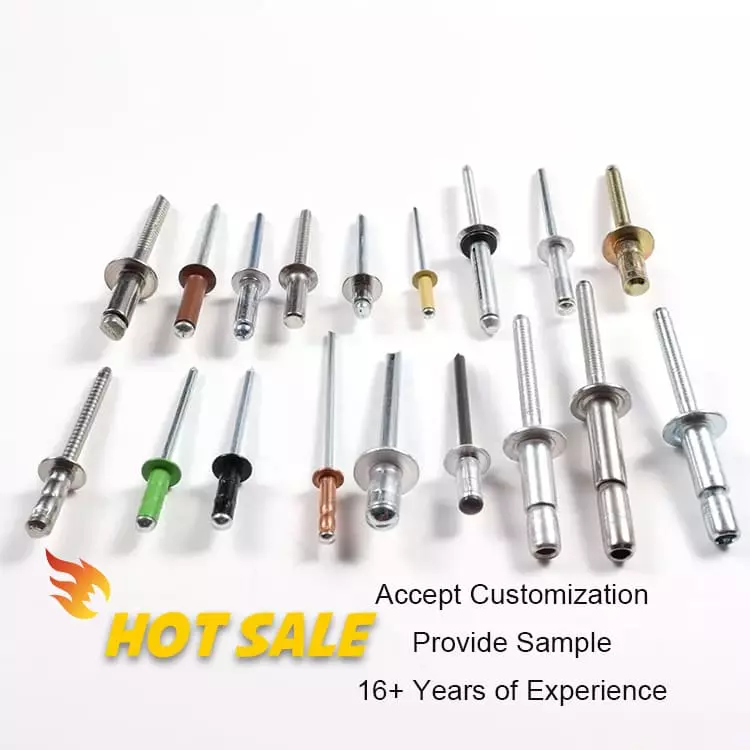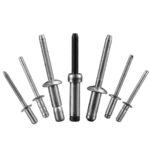What is the Melting Point of Aluminum Rivets?
Table of Contents
Aluminum rivets are widely used in structural connections such as photovoltaic modules, industrial sheet metal, electrical enclosures, cabinets, ventilation systems, and other applications due to their lightweight, corrosion-resistant, and easy-to-install advantages. However, when it comes to high-temperature environments, proximity of heat sources, or transition zones in the weld area, the thermal characteristics of aluminum become a critical factor that must be taken into account.
While most users are concerned with the mechanical strength of the rivet, the impact of its thermal stability and melting point on the safety of the connection is often overlooked. Aluminum rivets can fail due to softening, stress relief or deformation when exposed to high temperature airflow, exhaust heat waves or weld heat affected zones, even if they have not reached a molten state. This article will focus on “What is the melting point of aluminum rivets?” Explanation. And how to correctly assess the temperature risk in the actual engineering, to avoid thermal failure caused by structural loosening or system safety hazards.
Basic melting point range of aluminum
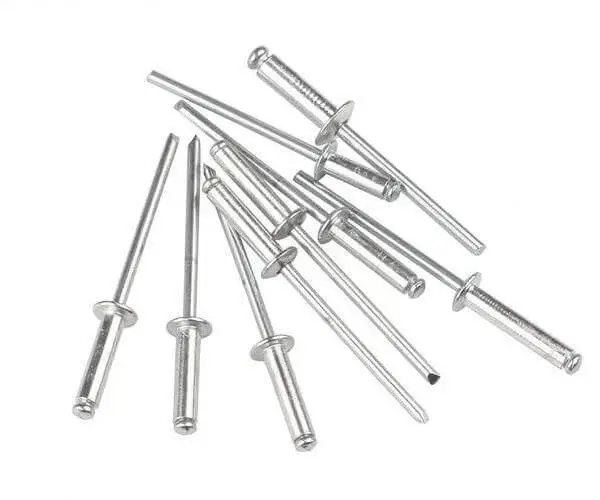
The melting point of aluminum is one of the most basic and critical indicators of its material properties. For pure aluminum, the melting point is 660.3°C (1220.5°F), which is the theoretical melting point of the metal. However, in actual industry, aluminum rivets are not usually made from pure aluminum. Instead, aluminum alloys that have been strengthened, such as the 5052, 5154, and 6061 series, are used to improve strength and riveting stability.
The melting point of aluminum alloy is not fixed, it will vary according to the proportion of magnesium, silicon, zinc, copper and other elements in the alloy composition. Overall, the melting point range for industrial aluminum rivets is roughly between 475°C and 640°C.
Example:
- 5052-H32 Aluminum Alloy (commonly used for rivet caps) melts at approximately 605°C – 650°C.
- 6061-T6 aluminum alloy melting point approx. 582°C – 652°C
- Aluminum-magnesium alloys with a high magnesium content (e.g. 5154) may have a slightly lower melting point of approx. 570°C – 630°C.
Although these melting points are well above everyday ambient temperatures, rivets may begin to soften and lose structural strength around 300°C, even if they have not reached their melting point, in high temperature equipment, in the vicinity of a weld, or during prolonged thermal cycling. Therefore, it is not enough to know the melting point, but rather to evaluate its performance in real-world conditions in conjunction with its “thermal durability” and “softening threshold temperature”.
Aluminum rivets vs. high-temperature conditions: why “melting point” is not the only concern?
Cause 1. Aluminum can experience a sudden drop in strength in the 200-300°C range
Although aluminum alloys typically have melting points between 580-650°C, their yield strength decreases rapidly at high temperatures. For example, 5052-H32 aluminum alloy has a tensile strength of approximately 193 MPa at room temperature, but this can drop to less than 50% in a 200°C environment. This means that rivets can loosen, slip or even break due to loss of strength, even if they don’t melt, when exposed to heat sources above 200°C after riveting is complete.

Cause 2. There are stress concentration points in the structure of the rivet, thermal expansion is easy to trigger loosening
Aluminum rivets are commonly used to connect sheet metal, if mixed with stainless steel, copper, galvanized parts and other materials, the difference in their coefficient of thermal expansion may lead to uneven stress in the riveted parts. In long-term thermal cycling or localized high-temperature environments, the accumulation of small deformations between materials may eventually cause the rivet cap body to extrude from the connection hole or break.
Cause 3. Heat failure is more likely to occur in the immediate vicinity of the weld (HAZ) or next to a hot air/exhaust system
Aluminum rivets located in the Heat Affected Zone (HAZ) can be “softened” by conducted heat within minutes, even if they are not in direct contact with the heat source. This is characterized by bulging of the rivet body, displacement of the mandrel, and loss of grip. This phenomenon of “thermal near-melting” is extremely common in uninsulated industrial furnaces, heat shields, engine guards, and other parts of the body.
Cause 4. Long-term temperature stability is different from one-time temperature resistance
Even if aluminum rivets in the experiment can withstand hundreds of degrees Celsius short-term heating, but if in a sustained high-temperature state, its microstructure will appear “age hardening” or “annealing softening” phenomenon. This makes it gradually lose structural stability. For this reason, Recommended Working Temperature is often used in engineering as a safe selection criterion instead of simply referring to the melting point.
Aluminum rivets common high-temperature application misunderstandings
In actual engineering projects, many users in the choice of rivet material is easy to ignore the impact of thermal conditions. If aluminum rivets are incorrectly used in high temperature areas or adjacent to heat sources, it may lead to structural hazards or early failure. The following are common misconceptions about aluminum rivets in high temperature applications.

- Aluminum rivets used in thermal spraying area: aluminum rivets are easy to soften and expand under the high temperature radiation of thermal spraying, resulting in loose riveting or broken mandrels.
- Aluminum rivets used in hot air ducts, furnace shell: long-term hot air environment will make aluminum rivets continue to soften and deformation, riveting point cracking or bulging.
- Welding area near the still choose aluminum rivets: welding heat-affected zone will be through the thermal conductivity of the aluminum rivets annealing softening, structural failure.
- Aluminum rivets are used to fix the shroud near the engine compartment/exhaust: under high-temperature vibration environment, aluminum rivets are prone to fatigue failure and loose shroud falling off.
- Failure to use insulating gaskets or backing plates for protection: aluminum rivets are in direct contact with high temperature metal surfaces and are susceptible to structural damage from heat transfer.
How to choose the right rivet material for high temperature areas?
Temperature class determines the material selection threshold.
- <150°C: General aluminum alloy rivets (e.g. 5052-H32) can meet, suitable for non-sustained high temperature system.
- 150-300°C: It is recommended to avoid aluminum and use 304 stainless steel rivets instead, which offer more stable resistance to softening.
- 300-500°C: Use 316 stainless steel or Inconel alloy rivets, which should be used in conjunction with a closed construction and thermal insulation design.
- >500°C: Need to customize high temperature alloy fasteners, such as Monel, Hastelloy class riveting system.
| Operating Temperature | Recommended Rivet Type | Description |
|---|---|---|
| ≤150°C | Aluminum body + Stainless steel mandrel | Suitable for PV enclosures, low-temp ducts |
| 150–300°C | Full 304 Stainless Steel blind rivet | For control boxes, heated air ducts, engine mounts |
| 300–500°C | Full 316 Stainless Steel structural rivet | For chimney guards, heater frames, thermal devices |
| ≥500°C | Inconel / Monel custom rivets | For industrial furnaces, gas pipelines, nuclear use |
Rivmate Riveting Solutions for High Temperature Applications
In high temperature environments, traditional aluminum rivets are often subject to softening and fatigue failure, leading to structural loosening and even dislodgement, making it necessary to use specialized fastening solutions that are both heat resistant and structurally stable. Rivmate offers blind rivets and structural rivets in stainless steel, Inconel, Monel and other high temperature resistant materials for hot environments from 150°C to over 600°C. Rivmate’s products are suitable for hot air ducts, control boxes, high temperature equipment housings and other critical areas. Our rivets are used in hot air ducts, control boxes, high temperature equipment housings and other critical areas.

How to Rivet Metal to Wood?
How to Rivet Metal to Woo

What Is Riveting in Metal Work?
What Is Riveting in Metal
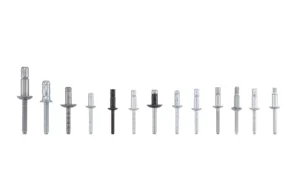
What Metal Are Rivets Made Of
What Metal Are Rivets Mad
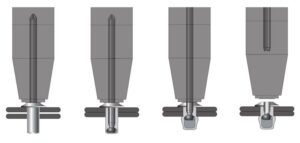
How to Rivet Metal to Metal
How to Rivet Metal to Met

